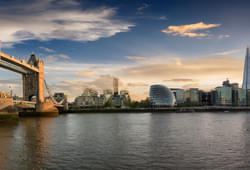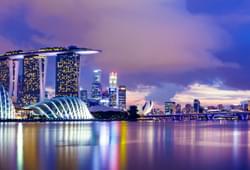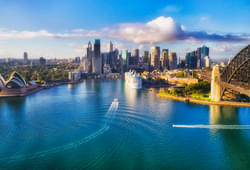The best time to visit
Australia, a land of several exciting landscapes, lies throughout the year. With busy, vibrant cities full of people and activity, and the quiet, tranquil countryside locations with stunning natural scenery, no matter what your interests are, Australia has something to offer everyone.
Do not forget to indulge in viewing the iconic Australian animals that you can't find anywhere else in the world! From kangaroos and koalas to crocodiles and snakes, there is an abundance of unique wildlife to discover.
So if you’re looking for Best season to visit Australia that offers stunning scenery, diverse wildlife and a fascinating culture, then look no further than some of the best sightseeing activities offered season wise. These activities are the best things to experience with friends and family.
Best Time to Visit Australia
- Best Time for Sightseeing
December to February months mark the summer in Australia, and it's a great time to visit many parts of the country. With long days and warm weather, you'll be able to make the most of your time outdoors. Keep in mind, however, that this is also the busiest time of year for tourism, so be sure to book your accommodation and flights well in advance.
If you're looking to escape the crowds, spring (September to November) is the Best time to visit Australia. The weather is still pleasant in most parts of Australia, but you'll find that prices are lower and there are fewer tourists around.
Australia is a big country, so the best time to visit depends on where you plan to go. In general, though, the shoulder seasons (March to May and October to November) are usually the best times to travel. You'll find that the weather is comfortable in most places, but without the high prices and large crowds of peak season.
- Best Time for Honeymoon in Australia
Spring (September to November) and Autumn (March to May) are widely considered the Best time to visit Australia for a honeymoon. These are the Best months to visit Australia which offer more comfortable weather conditions than the Australian summer, which can be extremely hot and humid, particularly in the tropical north.
If you’re planning a beach honeymoon, then the east coast of Australia is a great option. The
Gold Coast,
Byron Bay and Cairns are all popular destinations for newlyweds. If you’re hoping to avoid the crowds, then consider visiting during autumn or winter.
For a true Australian outback experience, head to Uluru (Ayers Rock) in the Northern Territory. This is a great destination for honeymooners who want to escape the hustle and bustle of city life – there are plenty of luxury resorts close by where you can relax and enjoy. The best time to visit Uluru is during the shoulder seasons of April to May or September to October when temperatures are milder.
- Best Time for Enjoying the Beaches
December to February is the hottest time of the year in Australia. The average daily temperature range is 25-32°C (77-90°F) but often reaches higher than 35°C (95°F) during this period. Although most of the country enjoys plenty of sunshine, the northern regions are prone to experiencing monsoonal weather patterns and cyclones from December to April.
The beach is a popular destination for Australians and visitors alike during the summer months, considering that water temperatures are at their coolest from June to August. If you’re planning on spending time in the country’s coastal areas, you may want to consider spring or autumn when the weather is more moderate making it Best time to visit australia.
- Best Time for Road Trip in Australia
The best time of year to go on a road trip in Australia depends on a few factors, such as the weather and the type of trip you want to go on.
If you're looking for warm weather, then the best time to go on a road trip in Australia is between December and February. This is when the majority of the country experiences summer weather, so you'll be able to enjoy long days and warm nights. December and January are also the busiest months for tourism, so if you're looking to avoid crowds, then February might be a better option.
If you're looking for cooler weather for your road trip, then the Best time to visit Australia is between June and August. This is when the majority of the country experiences winter weather, so you'll have shorter days and colder nights. June and July are also the quieter months for tourism, so if you're looking for a more relaxed trip, then August might be a better option.
- Best Time for Exploring Australian Vineyards
In general, the weather in
Australian vineyards is warm and dry, with some variations depending on the region. The north of the country tends to be hotter and more tropical, while the south is cooler and wetter.
The harvesting season for grapes usually begins in late February or early March and lasts until May. This is the busiest time of year for Australian vineyards, as they are busy producing wine for the upcoming year.
If you want to visit Australian vineyards during the peak season, the Best time to visit Australia is between March and May. However, if you want to avoid the crowds, you can visit during the shoulder seasons of November to February or June to August. These are also Best months to visit Australia if you want to see the vineyards in their natural state, as they are not being harvested at this time.
- Best Time for Adventure Sports in Australia
The best time for water sports is during the summer months from December to February. During this time, the weather is warm and sunny, and the water is at its warmest. This is the perfect time to go swimming, surfing, sailing, or windsurfing.
One of the most popular is snow sports, which can be enjoyed in any of the country's ski resorts. The Best time to visit Australia for this activity is usually between June and September, when the snowfall is at its heaviest.
During the spring months (September to November), mountain biking conditions are perfect. The weather is cool and dry, and there are fewer insects around. The autumn months (March to May) are also good for mountain biking, as the weather is somewhat similar to the spring season.
The Australian rock climbing season generally runs from October to March. December and January tend to be the busiest times, as Climbing in Australia is a popular summer vacation activity. However, if you are looking to avoid the crowds, late February or early March can be a Best time to visit Australia, as the weather is still warm but the crowds have thinned out.
- Best Time for Hiking in Australia
The best time for hiking in Australia depends on the region you plan to visit. In general, the best time for hikes is during the spring and autumn months, when the weather is cooler and there is less chance of rain.
If you plan to hike in the Alps, the Best time to visit Australia is from December to February, when there is snow on the ground and the scenery is at its most stunning. For hikes in Tasmania, the best time is from March to May, when the wildflowers are blooming and there are fewer crowds.
In general, avoid hiking during the summer months (December to February), when temperatures can be extreme and bushfires are a risk.
- Best Time to Explore Eaterfalls in Australia
During the wetter months of the year (November to April), most of Australia’s waterfalls are at their best. This is when they flow more strongly, and often create a spectacular show of spray and mist. If you’re planning to visit waterfalls during this time, be prepared for some wet weather – but it’ll be worth it!
In contrast, during the drier months (May to October), many waterfalls will have little or no water flowing over them. This can be a disappointment if you’re not expecting it, so it’s worth checking ahead before you visit. Even if a waterfall is mostly dry, though, you may still be able to see some Trickle Falls flowing.
In conclusion, the Best season to visit Australian waterfalls is during the wetter months of the year, from November to April. This is when the majority of waterfalls are flowing at their peak, and are one of the most impressive sights to witness. However, some waterfalls can be worth visiting all year round - it just depends on what you're looking for. For example, if you're after a more gentle and tranquil experience, then summer may be the best time for you.
Best Season to visit Australia
- High Season
The high season in Australia generally falls between December and February. December is peak summertime Down Under, so you can expect balmy weather and Christmas cheer throughout the country. January and February are also typically hot and sunny, making them ideal months to hit the beach. However, since high season falls into Australia’s peak travel period, you can expect higher prices for flights and accommodation during this time.
- Shoulder Season
As the weather starts to cool down in Australia, many people begin to think about getting away for a bit of shoulder season travel. However, this is a great time to travel.
Shoulder season is the time between high and low season, when tourist numbers are lower and there are often still good conditions for travel. In Australia, shoulder season varies depending on the region, but generally falls between March and May, or September and November. This is a Best season to visit in Australia if you want to avoid the crowds but still enjoy good weather and tourist facilities.
- Low Season
The low season in Australia generally runs from mid-April to mid-September. This is when most of the country experiences its winter, which means cooler temperatures and less tourist activity. However, there are still plenty of reasons to visit Australia during this time, especially if you’re looking for deals on accommodation and activities. However, it's important to research the climate of the specific places you want to visit before you travel, as the low season can sometimes be wet or very cold in certain parts of the country.
Best time to visit Australia by Month
- January
January is in the middle of summer in Australia, making it the perfect time to visit if you're looking for warm weather and long days. The heat can be intense in some parts of the country, so if you're not a fan of high temperatures, you may want to consider visiting somewhere like Tasmania where the days are shorter and the temperatures are milder.
- Average Max temperature: 26 degree Celsius
- Average Precipitation: 10.5 inch
- Temperature Range: 19 - 26 degree Celsius
- February
February is the last month of summer in Australia and arguably the best. The weather is still reliably warm and sunny, making it ideal for beach holidays, road trips and outdoor activities. You'll find plenty of school holidays and public events taking place across the country as locals make the most of the season.
- Average Max temperature: 26 degree Celsius
- Average Precipitation: 5.2 inch
- Temperature Range: 19 - 26 degree Celsius
- March
March weather makes it a great time to visit many parts of the country, including the coastal areas, rainforests, and Outback. Of course, there is always the potential for extreme weather conditions in Australia (as there is anywhere in the world), so it's always wise to check the forecast before you travel.
- Average Max temperature: 25 degree Celsius
- Average Precipitation: 8.8 inch
- Temperature Range: 18 - 25 degree Celsius
- April
If you're planning on visiting Australian beaches, April is a great time to do so. The water is still warm from the summer, but the crowds are lesser. For Sydney-siders, April is also a good time to visit one of the city's many outdoor pools.
- Average Max temperature: 23 degree Celsius
- Average Precipitation: 4.2 inch
- Temperature Range: 15 - 23 degree Celsius
- May
The weather begins to improve in most parts of the country. May is a good time to visit Sydney, Melbourne and Tasmania as the weather is getting warmer and there are fewer crowds. You can also begin exploring Australia's Outback as temperatures are starting to cool down.
- Average Max temperature: 20 degree Celsius
- Average Precipitation: 27.5 inch
- Temperature Range: 12 - 20 degree Celsius
- June
The weather in Australia in June is variable, but you can expect warm days and cool nights in most regions of the country. You'll find fresh seafood, unique fruits and vegetables, and delicious wine all over the country. In June, you'll find some of the best food and drink that Australia has to offer.
- Average Max temperature: 18 degree Celsius
- Average Precipitation: 40 inch
- Temperature Range: 10 - 18 degree Celsius
- July
The weather is perfect for spending time outdoors, and there are plenty of events and activities to enjoy. July is also a great Best season to visit australia if you're interested in Australian history and culture, as the country celebrates its national day on July 1st.
- Average Max temperature: 17 degree Celsius
- Average Precipitation: 5.5 inch
- Temperature Range: 8 - 17 degree Celsius
- August
The weather is perfect for spending time outdoors, and the country is full of exciting events and festivals. If you're looking for a unique experience, August is the Best season to visit Australia.
- Average Max temperature: 18 degree Celsius
- Average Precipitation: 2.7 inch
- Temperature Range: 9 - 18 degree Celsius
- September
The shoulder seasons of September are generally the best time to visit Australia, when temperatures are milder and there are fewer crowds. September falls at the start of spring in Australia, so it’s a great time to see wildflowers blooming.
- Average Max temperature: 20 degree Celsius
- Average Precipitation: 0.1 inch
- Temperature Range: 12 - 20 degree Celsius
- October
The weather in Australia is perfect for a beach vacation during the months of October through December. The water is still warm from the summer, but the temperatures cool down, making it more comfortable to spend time outside. If you're planning a trip Down Under, these are the best months to visit Australia.
- Average Max temperature: 22 degree Celsius
- Average Precipitation: 3 inch
- Temperature Range: 14 - 22 degree Celsius
- November
In November, the weather cools down in most parts of Australia, making it a great time to visit. The average temperature in November is 23°C, with highs of 28°C and lows of 17°C. November is a good time to visit Sydney, Brisbane, and Perth. The Great Barrier Reef is also a great destination in November.
- Average Max temperature: 24 degree Celsius
- Average Precipitation: 3.5 inch
- Temperature Range: 16 - 24 degree Celsius
- December
December is one of the busiest months in Australia, as tourists from all over the world flock to the country to enjoy its many attractions. December is also one of the hottest months in Australia, with an average temperature of 30°C (86°F). If you're planning a trip to Australia in December, be sure to book your accommodations well in advance.
- Average Max temperature: 26 degree Celsius
- Average Precipitation: 2.8 inch
- Temperature Range: 18 - 26 degree Celsius



.jpg?w=1400&h=320&dpr=1.0)















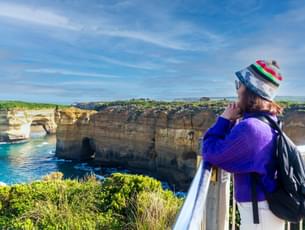
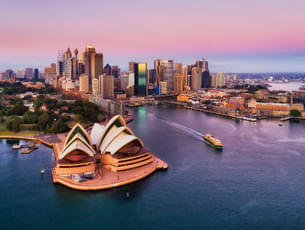
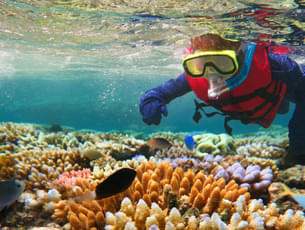









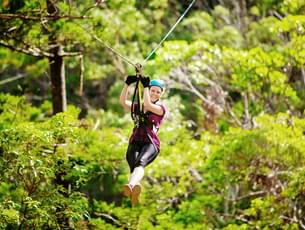
%20(1).jpg?w=305&h=230&dpr)


.jpg?w=305&h=230&dpr)
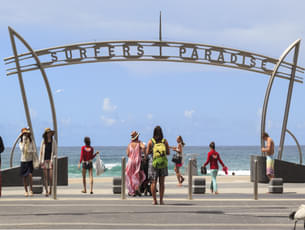





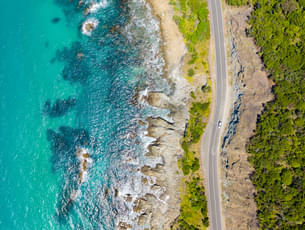

.jpg?gravity=center&width=245&height=183&crop=fill&quality=auto&fetch_format=auto&flags=strip_profile&format=jpg&sign_url=true)



.jpeg?w=305&h=230&dpr)












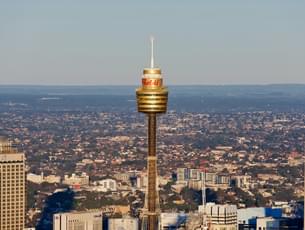

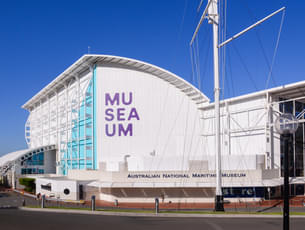

_for_Sydney_Klook(1).jpg?w=305&h=230&dpr)
.png?w=305&h=230&dpr)


LuxuryTransfersforSydney%20(1).jpg?w=305&h=230&dpr)

.png?w=305&h=230&dpr)
.png?w=305&h=230&dpr)


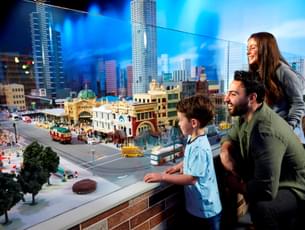


.jpg?gravity=center&width=245&height=183&crop=fill&quality=auto&fetch_format=auto&flags=strip_profile&format=jpg&sign_url=true)
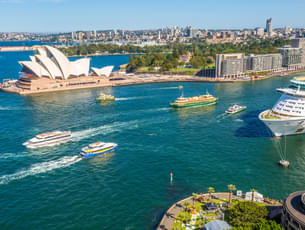
.jpg?w=305&h=230&dpr)



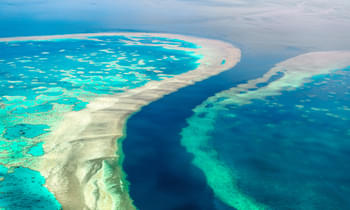
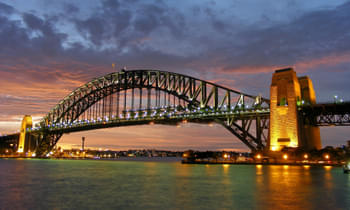











.jpg?gravity=center&width=255&height=270&crop=fill&quality=auto&fetch_format=auto&flags=strip_profile&format=jpg&sign_url=true)








.jpg?gravity=center&width=255&height=270&crop=fill&quality=auto&fetch_format=auto&flags=strip_profile&format=jpg&sign_url=true)
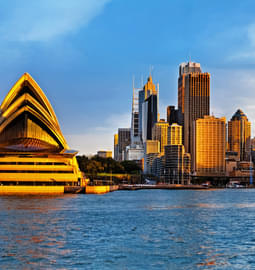
.jpg?gravity=center&width=255&height=270&crop=fill&quality=auto&fetch_format=auto&flags=strip_profile&format=jpg&sign_url=true)




